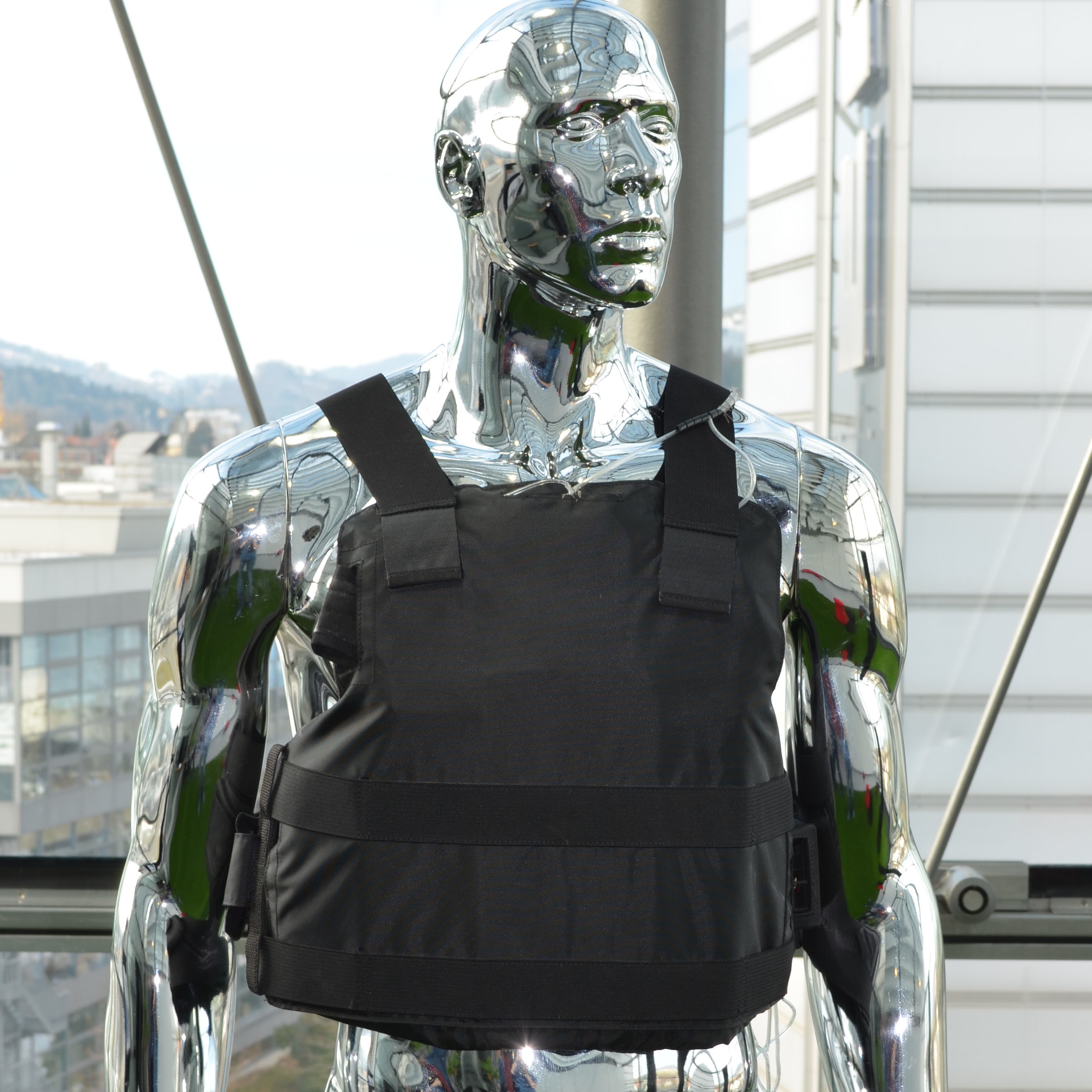High-tech gives textile industry new life

Standing on a rich textile tradition and an inclination to innovate, Swiss companies are showing a competitive advantage in the new world of textiles where smart technologies meet everyday fabric.
There has been a lot of buzz about the Swiss Solar Impulse project, which aims to fly the first solar-powered plane around the world in 2014. But who’s thinking about what the pilot will wear?
Textile engineers at the Swiss Federal Laboratories for Materials Science and Technology (Empa) have been and it won’t be your typical pilot uniform. Scientists there have developed a unique temperature control system integrated in the suit.
“As the plane does not provide energy for climate control in the cockpit, we have developed a multi-functioning suit which allows the pilot to regulate the temperature depending on his flight conditions,” said Marcel Halbeisen, Empa project manager in the Protection and Physiology and the Advanced Fibres departments.
It is just one of many high-tech textile innovations coming out of Empa. The Swiss laboratories work in collaboration with industry in order to promote product-resulting research.
For example, Empa recently developed an air-conditioned bulletproof vest along with private partners, including Unico Swiss Tex. The Alpnachstad-based company, which specialises in cooling garments, is now developing the armoured vests for market.
Tested by Zurich city police officers, the bulletproof vests contain refillable water-filled pads and a ventilation system to effectively cool the body a couple of degrees. According to Unico, the product is already in high demand, particularly from security forces in hot countries, such as Saudi Arabia and India. The company’s next step is to scale-up their operations to begin mass production.
The future
High-tech is being called the future of textiles in Switzerland. According to the Swiss Textile Federation, which counts 200 member companies, technical textiles represent one-third of the country’s global textile exports.
“As Asia has moved into commodity textiles, European companies must go into the technical textiles in order to be competitive in this world market,” said Manfred Bickel, head of the organisation’s technology and research departments.
“We have to find new techniques, technologies, materials and finishing products to make our way into new markets such as the environment, health, building, even high-tech haute couture,” Bickel explained, admitting that this kind of diversification takes significant investment and can be difficult for companies in the early stages.
Rechargeable handbags
Forster Rohner, a St Gallen-based embroidery company, is doing just that. Recognising that the traditional textile market is no longer expanding in Switzerland, the 100-year-old family-run firm has created a research and development department to explore new applications for embroidery.
Jan Zimmermann, who is managing technical textiles there, hopes it will be a “relevant part of the company in three to four years”.
As one of its first steps in merging technology and fashion, the embroidery specialist developed a luxury solar-powered handbag in partnership with seven other international and Swiss centres of research, including Empa. The bag’s textile photovoltaic surface charges a hidden lithium ion battery inside the bag to both illuminate the interior and charge a mobile phone when plugged into the USB cable inside.
Other fashion-forward high-tech innovations to which Forster Rohner has contributed includes a “climate dress” that senses and signals changes in CO2 in the environment with light patterns using conductive thread and hundreds of tiny LEDs.
Partnering for Innovation
A commonality in many of these high-tech textile initiatives is collaboration, as competencies from many fields are needed to execute these projects. One such project is bringing together more than 24 universities, research institutions and industrial research and development labs from 13 European countries.
The initiative is called Guardian Angels for a Smarter Life and it’s being led by the Swiss Federal Institute of Technology in Lausanne (EPFL) and in Zurich (ETHZ). It is one of six proposals in the running for €1 billion of funding from the European Union’s Future and Emerging Technologies flagship programme.
An ambitious endeavour, the mission is to develop a new concept of extremely low powered, electronic devices that could be integrated into everyday objects, such as clothes, to provide users with all sorts of information about themselves and their environment.
One possible Guardian Angel application is the integration of nanosensors into a T-shirt, for example, to measure physiological signs (such as heart rate, blood pressure and body temperature) data and provide analysis as to what this information means to the user.
For project coordinator Christofer Hierold, chair of the micro and nanosystems section at ETHZ, one key element that makes these systems possible are the ultra-low powered, nanosensors. A thousand times smaller than a single strand of hair, the sensors will be supported by environmental energy.
Today’s devices are still bulky and intrusive, he said. “We want to reduce the size and the energy needs of these technologies to the point that people may not even notice that they are there.”
Historical Context
Swiss leadership in the field is part of the natural evolution of the country’s textile heritage, explains the director of the St Gallen Textile Museum, Michaela Reichel.
“Our theory is that the inclination to work on textile developments is historically founded. It started in the 19th century, when a lot of fabric machines were invented. Although most were not invented in Switzerland, they were optimised here,” said Reichel.
At the time, the companies strived to make some techniques, such as embroidery, cheaper and more efficient. “The goals are different today as companies try to find their niche in a world market,” she explained.
Currently on display at the Textile Museum in St Gallen, Traum & Realisation (Dream and Realisation) shows the evolution of the textile industry in the east of Switzerland. From embroidery and cotton, to prints and linen, the exhibit shows the history of St Gallen’s rich textile tradition dating back to the 16th century.
As the production of classic fabrics has moved to Asia, the Swiss region has specialised in the development of high-tech and smart textiles. Not only does the exhibition put a selection of leading companies and their creations on display, it also puts them to use. Note for example, the light reducing covering on the windows by Heiden-based precision fabric manufacturer Sefar, and the protective floor coating by Bühler-based indoor and outdoor textile provider, Tisca Tiara.
Traum & Realisation will be on display through 2013.

In compliance with the JTI standards
More: SWI swissinfo.ch certified by the Journalism Trust Initiative










You can find an overview of ongoing debates with our journalists here . Please join us!
If you want to start a conversation about a topic raised in this article or want to report factual errors, email us at english@swissinfo.ch.